Christmas traditions from around the world can be very different from one another, even on the same continent! If you’d like to visit any of the following countries during the holiday season, familiarizing yourself with these traditions can help you avoid culture shock. Or, if you’re staying home this season, you can still bring a taste of the rest of the world to your holiday celebrations!
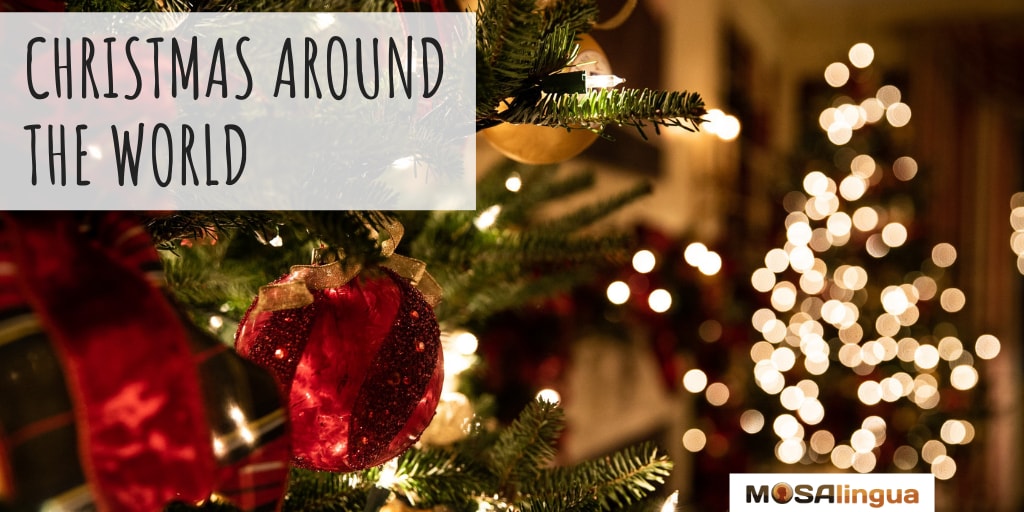
What’s inside…
Christmas Around the World: Unique Ways that 11 Different Countries Celebrate the Holidays
Christmas is coming and it’s the perfect opportunity to learn about how other countries and cultures celebrate. It’s also a great time to brush up on your Christmas vocabulary in foreign languages! Even if you’re not planning to travel this season, you can give your own celebrations an international twist, inspired by these unique Christmas traditions.
Christmas Traditions from Around the World: The Americas
Let’s begin close to home (for most of our readers), in the Americas. It’s amazing how much traditions can vary from country to country! We’ll begin our discovery of Christmas traditions from around the world in the largest country in North America…
🇨🇦 Canadian Christmas traditions
Over the last few centuries, Canada has become home to an interesting mixture of cultures. The country is effectively divided into two parts: the English-speaking region and the French-speaking region (more commonly called Quebec). Canadian holiday traditions are mostly imported from France and Great Britain but also come from the country’s indigenous population.
Christmas celebrations begin early, in late November and early December. Christmas markets are becoming increasingly popular in Quebec. At these markets, you can discover local artisanal products, drink hot cider and mulled wine, eat pastries and treats, pick out a Christmas tree, or go for a sleigh ride. Many other events take place around the country: Santa parades, Nutcracker performances, light festivals in large cities, The Peak of Christmas north of Vancouver, or Christmas Mass, which is still popular in Quebec on Christmas Eve.
Quebec Christmas elves
The Quebecois also have a unique tradition. It’s fairly new, but very popular: decorating houses with elves. The elves keep an eye on the children and report their behavior back to Santa. You won’t see them move during the day, but legend has it they goof around at night! This tradition was invented to help children be patient for the upcoming holiday. It also gets parents involved, inventing the mischievous tricks that the elves played overnight.
The Canadian Christmas meal generally takes place on December 24. Traditional dishes include turkey, cranberry sauce, meat pies, and of course, the famous bûche (yule log). Many families still put up nativity scenes—an ancient tradition—and Christmas music is very popular.
Canadians typically spend Christmas Day with their families and friends. Common activities include pickup hockey games at the nearest skating rink. December 26 is also a holiday in Canada: Boxing Day. It’s a day of post-Christmas sales, and many people spend the day shopping.
🇲🇽 Mexican Christmas traditions
Unlike in some countries, Christmas festivities start early in Mexico. In fact, the celebration of Las Posadas starts on December 16 and lasts all the way through December 24. During this week, friends and family reenact Mary and Joseph’s journey to Bethlehem. Groups move from house to house singing traditional dialogues set to music, asking for hospitality at each door.
Santa Claus does not exist for Mexican children. Instead, Baby Jesus brings them their gifts, which they open on Christmas Day. Another tradition is to break open a piñata filled with fruits and treats. The Christmas meal is typically served on Christmas Eve. Traditional dishes include turkey with vegetables and raisins, a salad made of apples and raisins, hot tea or Christmas punch, and buñuelos (a kind of beignet) for dessert.
But the festivities continue until January 6, the day the Three Wise Men visited the newborn Baby Jesus. Mexican kids leave a shoe under the Christmas tree to be filled with money.
🇨🇴 Christmas traditions in Colombia
Christmas in Colombia begins on December 7 with the Día de las Velitas (Day of the Little Candles). On this day dedicated to the Virgin Mary, families place several lit candles on their front steps and also hang lanterns. This is also the day Christmas lights are turned on all over the country.
On December 16, Catholic Colombians begin to pray the novena de aguinaldos, and continue to do so for the following nine days. These gatherings mainly take place within families or neighborhoods, but also in some workplaces. One family or team is usually in charge of each novena.
In the novenas, people read aloud from a prayer book to commemorate the main events leading up to the birth of Jesus. At the end, people sing traditional Christmas carols from the region and eat delicious holiday dishes, such as buñuelos and canelazo, a hot drink made from panela (sugar cane) and aguardiente (aniseed liqueur).
On Christmas Eve, families (often including distant relatives) gather to eat traditional dishes such as ajiaco (chicken soup) or tamales. At midnight, it’s time to open Christmas presents! Some families will stay up until dawn dancing to the rhythm of salsa and merengue. Just like in Mexico, children in Colombia write letters to Baby Jesus instead of Santa Claus.
Start learning a new language today

Good news: we can help!
More good news: you can get started for free! Start your free trial now and for the next 15 days, take advantage of the most effective language learning method on the market!
Vocabulary flashcards, videos with subtitles, audiobooks, articles adapted to your level – with MosaLingua Premium (Web & Mobile), you’ll have access to all this and more. Get started right now. It’s free—and risk-free—to try!
Christmas Traditions from Around the World: Europe
There is a lot about Christmas that seems universal, but every country has something that makes the holiday unique. For example, in Denmark, children dance around the tree before opening their presents on Christmas Eve. Households take all of their decorations down on December 26. That might seem strange to some of us who leave our trees up until mid-January! Let’s continue our journey in Europe and find out about some other Christmas traditions from this part of the world…
🇪🇸 Christmas traditions in Spain
In Spain, celebrations start on December 22, the day of the Christmas lottery. Then, on Christmas Eve, or Noche Buena, families share a huge feast: pork, turkey, or sea bream (depending on the region), soup, seafood, turrón (a kind of nougat), marzipan, and polvorones (Spanish shortbread cookies). After dinner, many people go to mass. Gifts are not opened on Christmas Day, but instead on día de los Reyes (the Epiphany).
In Catalonia, there is a tradition called Tió de Nadal. It consists of “feeding” a log a little bit each day starting on December 8, then covering it with a red cloth. On Christmas Eve, children hit it to get it to “poop out” small gifts like nuts, candies, and other treats. This is also where it gets one of its naughty nicknames: Caga Tió. What an interesting custom! 💩
🇷🇴 Romanian Christmas traditions
In Romania, it is customary to slaughter a pig on December 20, the feast of Saint Ignatius. This tradition dates back to the pre-Christian era, when people sacrificed animals to deities in thanks for the past year. After the slaughter, families start preparing traditional dishes: sausages, caltabosi, tochitura, and piftie.
Another more joyous tradition includes Christmas songs. Even though Christmas music is very popular in just about every country that celebrates Christmas, things are a little different in Romania. This tradition starts before Christmas and lasts until after the Epiphany. Singers wear beautiful costumes and carry bells and drums, as well as whips for chasing away evil spirits. In some regions, the songs are accompanied by dances, like the Bear Dance and the Goat Dance. Children, or colindatori (“those who sing while walking”), go from door to door singing traditional songs, called colinde. Neighbors give them colaci, a kind of small sweetbread, candies, or money. If you don’t open the door for them, it’s said that you’re in for a year of bad luck!
🇩🇪 German Christmas traditions
The Advent wreath is one of the most important Christmas traditions in Germany. Its origins date back to the early 19th century. Families adorn the wreath with pine boughs and 4 candles and place it in the center of their table. Every Sunday of Advent, when it starts to get dark, families light a candle and read a story or poem.
The Advent wreath represents light (candles), life (greenery), and eternity (circular shape) and illuminates homes during the winter.
The Christmas tree is another tradition that, according to some historians, originated in Germany. In the Alsace region, in the 18th century, the wealthiest families decorated a tree with apples and wafers, which they ate on the Epiphany. This practice was considered pagan by the Protestant church, but quickly spread through the faith.
Many German families still decorate a tree for Christmas Eve, either before or after dinner, but others prefer to have it ready on the first Sunday of Advent.
🇮🇸 Christmas traditions in Iceland
Christmas has its origins in celebrations of the winter solstice, which were later adopted by Christian settlers. Iceland’s patron saint passed away on December 23 and to commemorate him, people customarily eat ham with mustard, and potato and carrot casserole, among other things.
The Christmas Eve celebration begins at 6:00 p.m., probably due to an old Icelandic tradition of beginning the new day at 6:00 p.m. rather than at midnight. Children open their presents after Christmas dinner.
Icelandic people usually celebrate with their closest relatives on December 25. The main dinner consists of lamb stew and a loaf of bread decorated with each family’s crest or symbol. It is traditional for everyone to wear new clothes and to receive a new book. Children traditionally receive a candle and a deck of cards.
Elves are also typical characters in Icelandic Christmas celebrations. It is believed that these beings are playful, like to eat a lot, and play pranks on people. Elves bring Christmas presents for children and put them in shoes left out near the window sill. Children who have been naughty get a potato or a message telling them to be good.
Christmas Traditions from Around the World: Africa
Africa is a huge continent, and traditions vary a lot depending upon each country’s official religion. Muslim countries don’t tend to observe Christmas at all. Christian countries, however, have Christmas traditions similar to European celebrations, with some variations. Maybe the Christmas tree is a mango tree, for example, and the dishes at Christmas dinner change depending upon each country. But the essence of the celebration is the same: it’s a family holiday filled with music and gifts. Unfortunately, not many specific traditions are well-known! If you’d like to travel to this amazing continent during the holidays, you could start in Ethiopia, where Christmas celebrations probably look quite different from your own!
🇪🇹 Christmas in Ethiopia
Ethiopians celebrate Christmas in January. (A few other countries, like Egypt and Russia, do the same.) But the Christmas season starts much earlier: believers fast for 40 days before Christmas, also called Genna, Ledet or Kollé by local populations, and celebrate on January 7. During these 40 days, people only eat one meal per day, without fish, meat, or eggs. On Christmas Eve (January 6), people dress in white, gather at a church, and then pass from one church to another all night.
Then, families and friends gather together for a big feast, traditionally made of wat, himbasha (a flatbread), and tej (a honey-based drink). They exchange small gifts, like sweetbreads. Nothing like our sometimes extravagant gifts! Gifts from Santa Claus are not part of traditional Ethiopian culture, but they are becoming more common.
The festivities continue the following day, on January 7, when men perform a kind of equestrian parade called gug, and play gena, a game similar to cricket. According to legend, the shepherds of Nazareth were playing this game when the angels announced the birth of Jesus.
Christmas Traditions from Around the World: Asia
Asia is another vast continent whose Christmas traditions vary widely. Many Asian countries don’t celebrate the holiday for a very simple reason: Christmas is a Christian tradition. Even though Christians in each country gather to observe the holiday, traditional religions are still more common. For example, hardly anyone celebrates this holiday in Nepal, Turkey, or Afghanistan. It’s entirely forbidden in Brunei. However, many of these countries do have impressive New Year’s celebrations.
🇷🇺 Russian Christmas traditions
If you go to Russia during the Christmas season, don’t be surprised when nothing happens on December 25! The country is Orthodox Christian, and because the government prohibited Christmas celebrations for almost 100 years (from the Revolution until 1991), Russia begins its celebrations with the New Year. In fact, New Year’s Eve is actually much more important to Russians than Christmas, which is celebrated on January 7. Christmas is, foremost, a religious holiday.
The spectacle of Ded Moroz (Grandfather Frost) and his granddaughter Snegourotchka is a traditional celebration. Children often leave with a small present, often candy. There are many other customs surrounding New Year’s, like wearing new clothes to start the year off well; not sleeping to keep from being lazy during the year; having a full table in order to have good fortune; washing the mirrors and windows; etc. The head of the government gives his wishes over television, the bells of the Kremlin chime at midnight, and children receive their gifts on December 31.
The feast includes amuse-bouches, Russian champagne, salads, mandarin oranges, and more. For this occasion, Russians gather together with their family and close friends. Russians still make most of their decorations by hand.
If you want to have fun outdoors during the holidays, the cold doesn’t stop Russians! There are open-air skating rinks, ice sculptures, long walks, sleigh rides… Have your pick! One word of advice: dress warm!
🇯🇵 Christmas in Japan
Christmas is celebrated very differently in Japan. Even though big cities might be twinkling with lights, December 25 is not a national holiday. But some people certainly do observe Christmas! It’s just not a day for celebrating the birth of Jesus or for gathering with your family! Christmas Eve seems a little more like Valentine’s Day, celebrated between couples and friends. Groups often meet at restaurants to share a meal together.
And the traditional meal is not a stuffed turkey. Maybe it’s because turkeys are difficult to find in Japan. However, fried chicken is extremely popular in Japan, so this is a more common dish for the holiday. Of course, some choose to eat a fancier meal before exchanging gifts. Those who do celebrate also eat a traditional Christmas dessert called kurisumasu keki, a kind of strawberry shortcake.
In fact, only Christians (there are few in Japan) celebrate the holiday by decorating a tree. Santa Claus doesn’t really play a role, either. A more common symbol is Hotei or Hoteisho, one of the seven gods of fortune.
Christmas Traditions from Around the World: Australia (Oceania)
Spending Christmas in Australia is sure to be warm! Many Australians celebrate by swimming or walking on the beach after eating a meal as a family. Or they might have a big barbecue by the pool. Whatever they do, it’s sure to take advantage of the beautiful weather.
If you travel to Australia for the holiday, you’ll be surprised by the big difference in the weather (it’s generally warm and sunny), but you might also be surprised that many familiar traditions stay the same. Christmas trees, Santa Claus, Christmas Crackers, treats, and gift exchanges…
In the aboriginal culture, the month of December corresponds with the rebirth of plants and animals after the dry season. Many celebrate by decorating a tree. It’s also a time to gather and dance to commemorate those who have passed away.
BONUS: How to Say Merry Christmas in Other Languages
If you’re just starting to get into the holiday spirit (or if you’re planning a trip to any of these countries soon), be sure to check out our article on how to say “Merry Christmas” in other languages!
Take It a Step Further
If you enjoyed this article, you might also like:
- Easter Traditions in Other Countries and Languages
- Spooky Halloween Words in Spanish + 5 Other Languages
Learn more about each of these languages and each country’s customs with MosaLingua! If your country wasn’t listed here, let us know in the comments how you celebrate, and any other Christmas traditions from around the world that you know of. Merry Christmas!
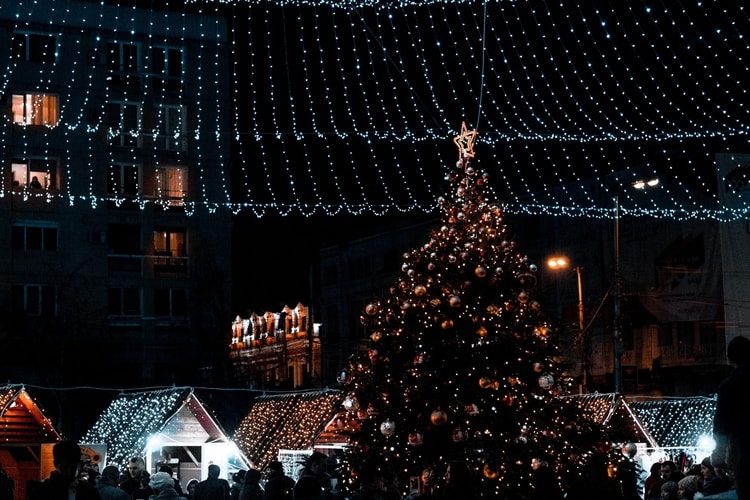
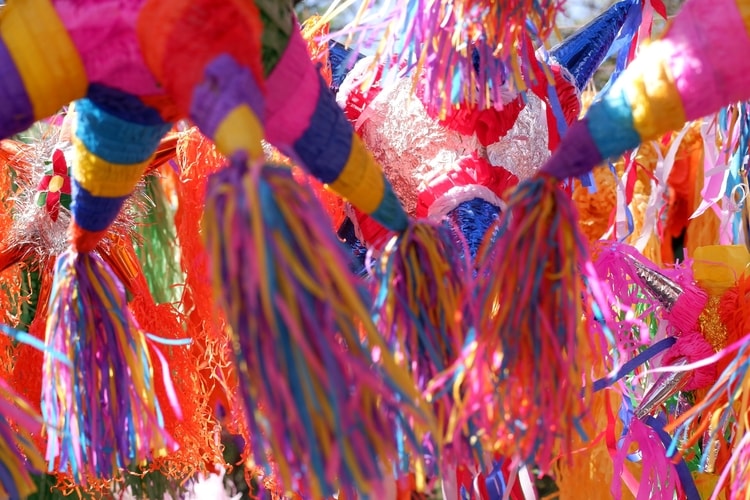
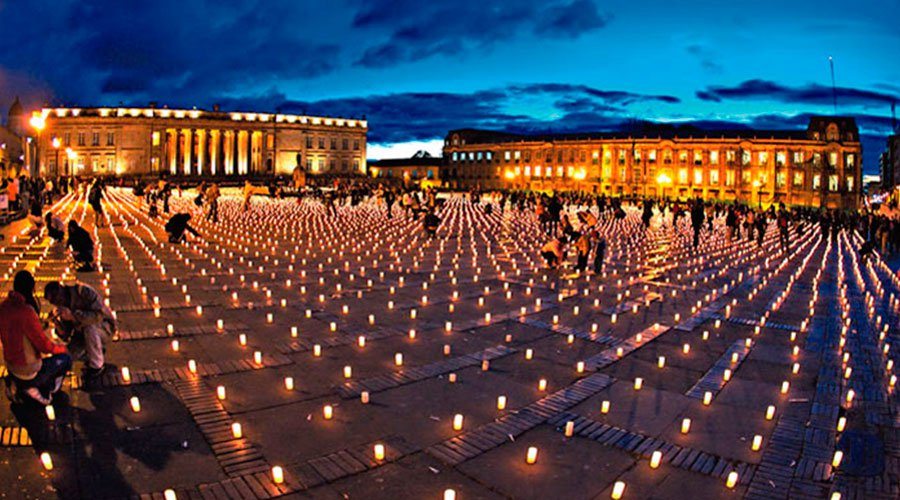
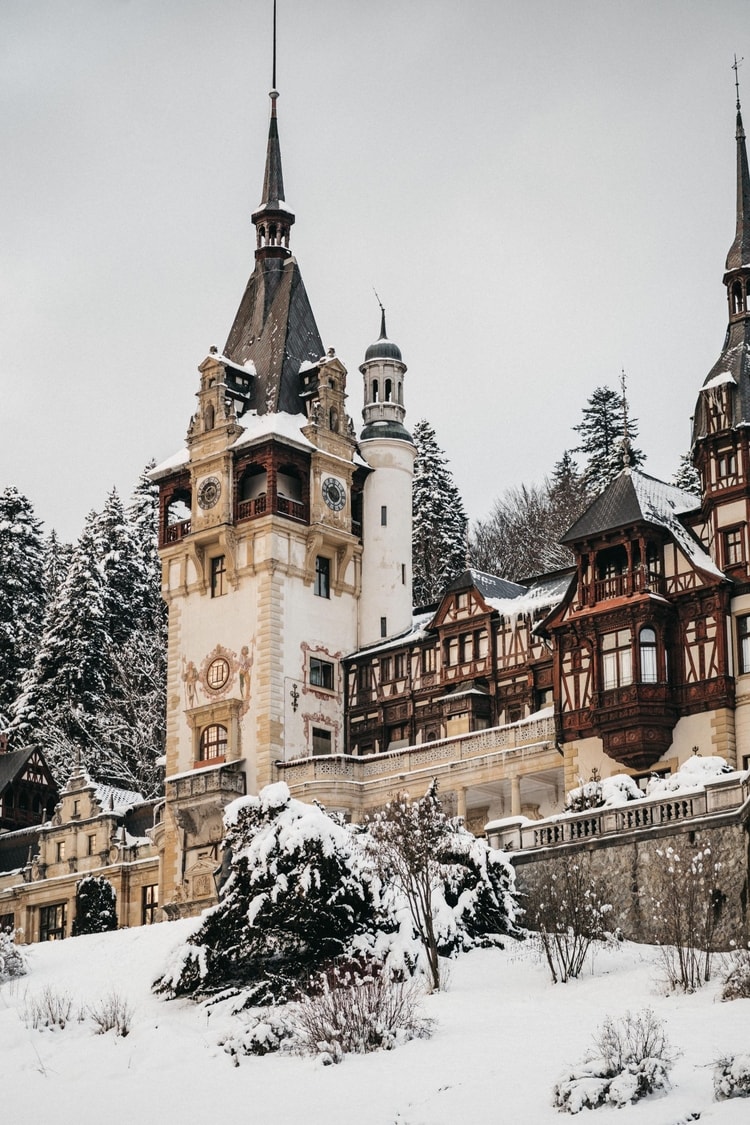
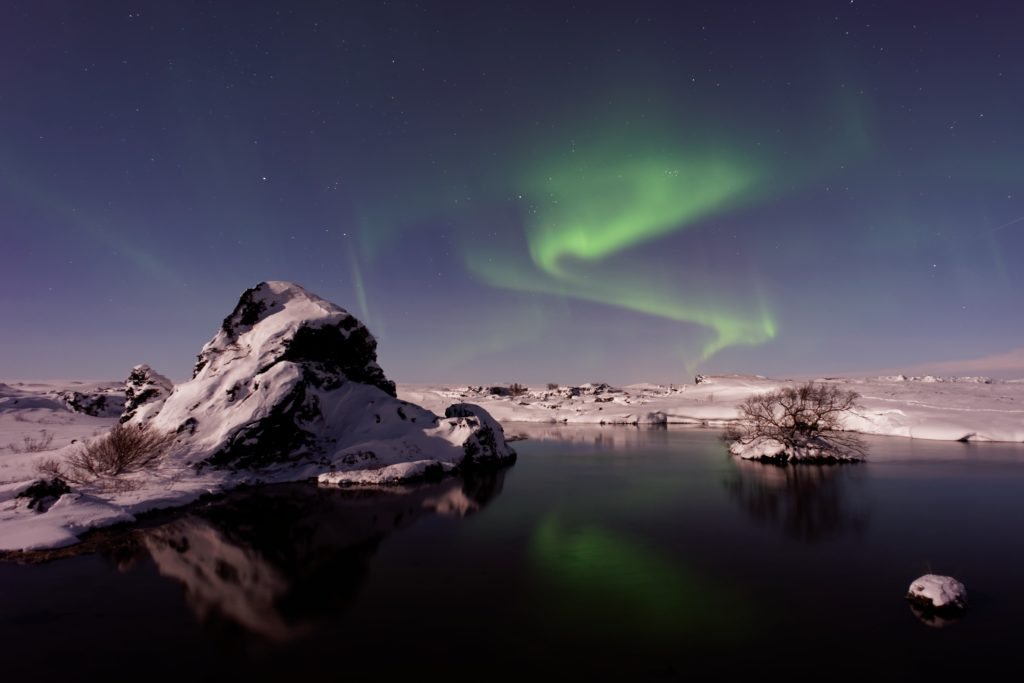
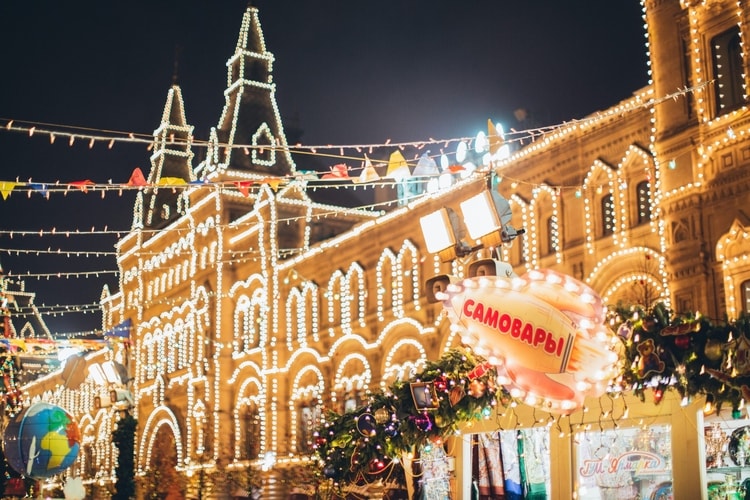
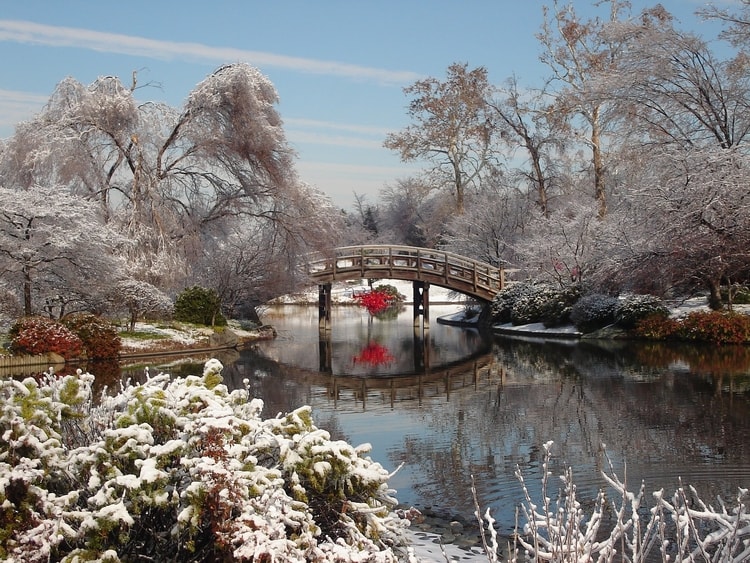
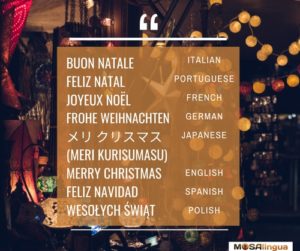




Comments